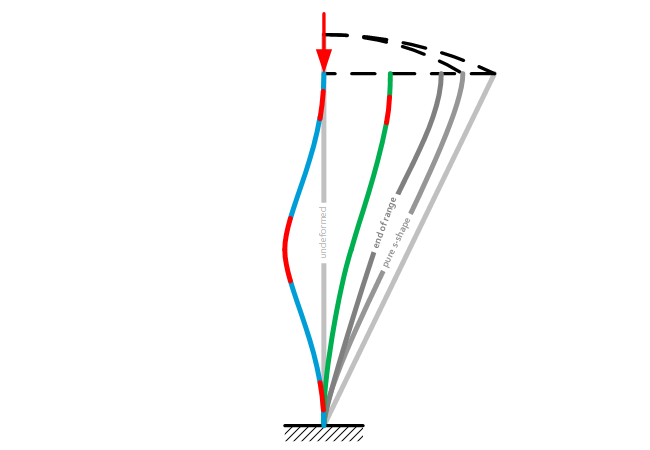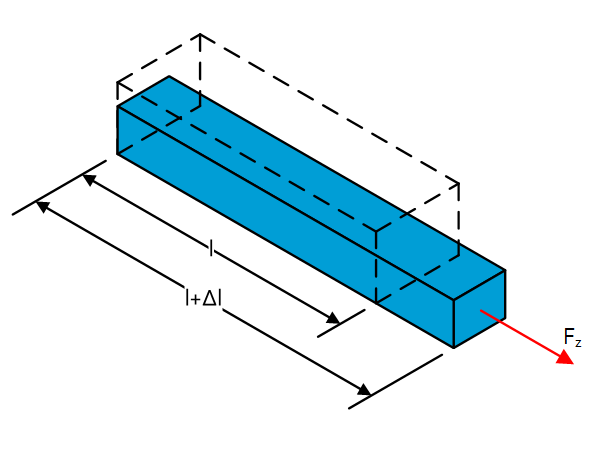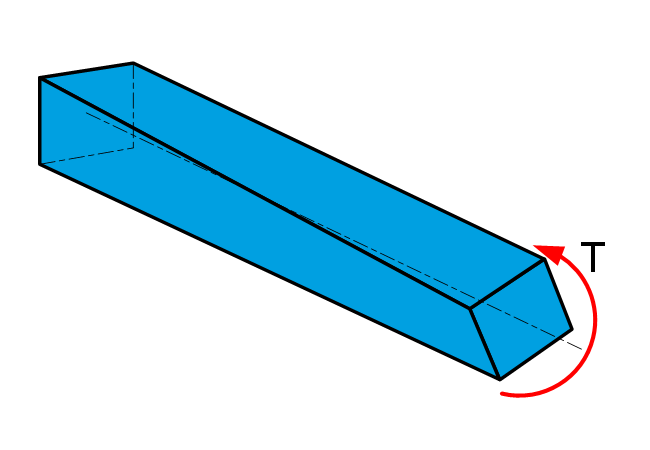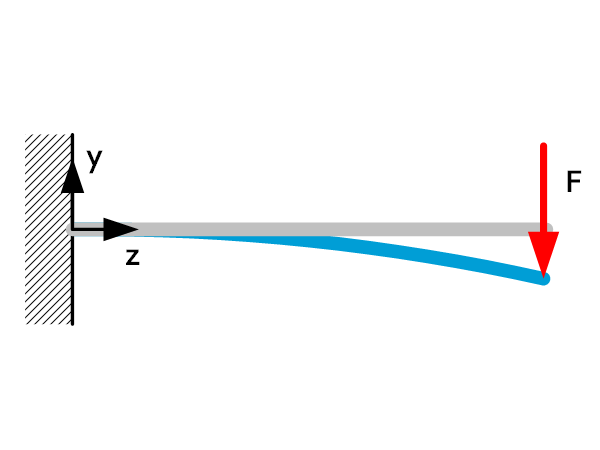Buckling phenomena

Introduction Standard buckling equations are commonly known. However, through FEM-development, analysis of post buckling behavior is possible and now elements in post buckling state can be used in construction design to the benefit of the constructions’ performance. Negative stiffness effect A buckled leaf spring comprises a negative stiffness in the lateral direction for the range:$-0.87u_x<x<0.87u_x$With […]
Beam theory: Tension/compression and shear

Tension/compression Stress $sigma=frac{F_z}{A}=frac{F_z}{wcdot h}$ Strain $epsilon=frac{Delta l}{l} $ Young’s modulus (modulus of elasticity) The Young’s modulus is only dependent on the type of material and not on its dimensions.$E=frac{sigma}{epsilon}=frac{F_z}{Acdotepsilon} $ Stiffness In contrast with the Young’s modulus, stiffness is dependent on both the type of material and its dimensions. $C_z=frac{F_z}{Delta l}=frac{EA}{l} $ Poisson’s ratio The Poisson’s […]
Beam theory: Torsion

Introduction When a straight beam is subjected to an axial moment, each cross-section twists around its torsional center. Shear stresses occur within the cross-sectional planes of the beam. Angular twist For a torsionally loaded beam, the angular twist is described by: $$theta=frac{Tcdot L}{Gcdot J_T}$$ $J_T$ is the torsion constant. It is equal to the polar […]
Beam theory: Bending

Introduction Beam theory is such a common engineering fundamental; it is impossible to be omitted from almost any engineering-specialism. However, this sheet incorporates stress and stiffness as well. For more information on, and calculations of the area moment of inertia I, see sheet: Area moment of inertia. Validity Euler-Bernoulli beam theory is only valid with […]
